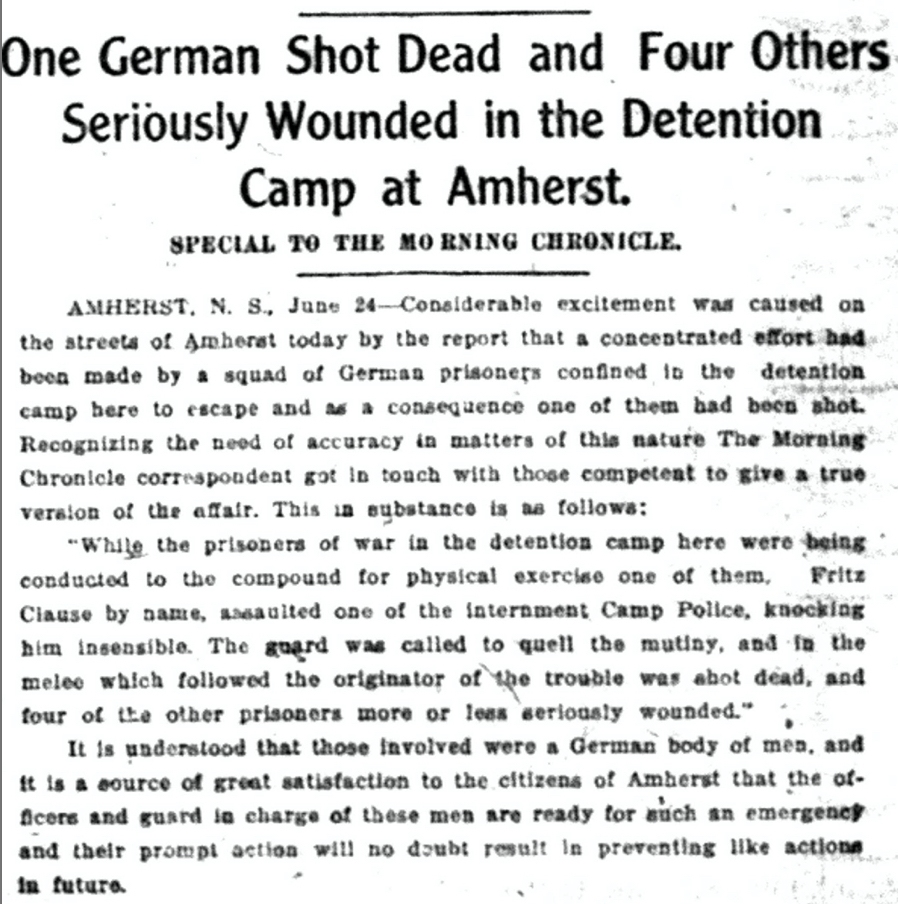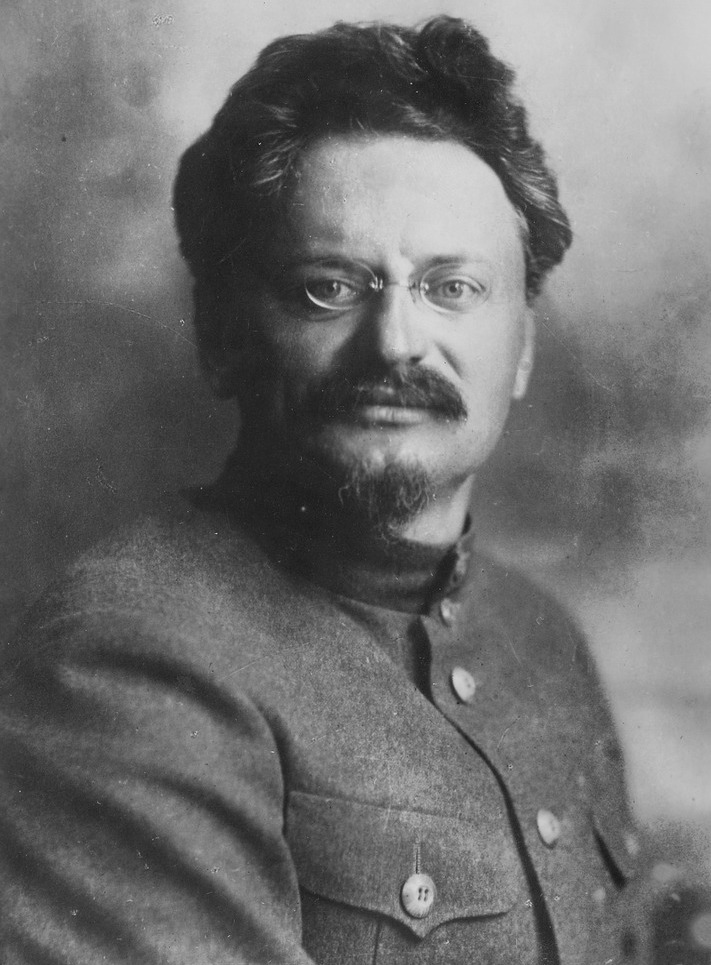The Amherst internment camp in Nova Scotia was the largest such camp in Canada during the First World War, with a maximum capacity of about 850 men. In total, there were 24 internment camps and receiving stations across the country. While most camps housed “enemy aliens,” the majority of internees at Amherst were German prisoners of war. This included hundreds of German sailors from the SS Kaiser Wilhelm der Grosse, which was sunk by a British cruiser in 1915. Its most famous internee, however, was Russian socialist Leon Trotsky, who was held prisoner at Amherst in April 1917.

Internment Camps
When the First World War was declared in August 1914, the Canadian government required residents who were not naturalized British subjects to register. Only those born in Canada and naturalized immigrants were considered British subjects (this changed in January 1947). If someone failed to register or report regularly to authorities, they could be interned in one of 24 camps that had been established across Canada. Over the course of the war, these camps would hold a total of 8,579 men.
Three internment camps were established in Nova Scotia: Melville Island on the Northwest Arm of Halifax, Citadel Hill (Fort George) in Halifax, and the Amherst internment camp located at the former site of the Canadian Car and Foundry Malleable Iron Works at the corner of Park and Hickman streets. Amherst became the largest internment camp in Canada during the First World War, holding a maximum of 854 men.

Amherst Internment Camp
The prisoners at the Amherst internment camp were housed in a building just over 400 m long and 30 m wide. The camp also included a hospital, a medical inspection room, officers’ quarters, soldiers’ barracks (265 guards were needed to staff the camp), a recreation room, a mess hall and washrooms.
Russian socialist Leon Trotsky, who was a prisoner at Amherst in April 1917, later described conditions at the camp in his memoirs:
The Amherst concentration camp was located in an old and very dilapidated iron foundry that had been confiscated from its German owner. The sleeping bunks were arranged in three tiers, two deep on each side of the hall. About 800 of us lived in these conditions….

Amherst Internees
Many of the prisoners held in the Amherst internment camp were German sailors and second-class reservists (non-officers). Some were “enemy aliens” of Ukrainian descent. (See also Ukrainian Internment in Canada.) The first prisoners arrived from Halifax aboard armed trains on 17 April 1915; these were 640 sailors from the auxiliary cruiser SS Kaiser Wilhelm der Grosse, which had been scuttled off the west coast of Africa in an action with the British cruiser HMS Highflyer.

Prisoners were assigned labour duties such as working at a nearby experimental farm, clearing forested areas for farmland and doing maintenance work on the Canadian National rail line. They were provided the same rations as Canadian soldiers and given materials for craftmaking, as well as equipment for sports, music and theatrical activities. In 1916, prisoners began publishing a newspaper, the Amherst Spatz, about their lives at the camp.

But all was not peaceful at the Amherst internment camp.
On 25 June 1915, a group of prisoners attempted an escape. During the ensuing riot, one guard was injured, while a prisoner named Fritz Claus was shot dead and four others were wounded. After an inquiry, the camp commander, Major G.R. Oulton, a veteran of the Boer War, was replaced by Colonel Arthur Henry Morris.

Leon Trotsky
The camp’s most notable prisoner was Russian socialist Leon Trotsky (1879–1940), who arrived in early April 1917.
Trotsky had been travelling to Russia from the United States when his passenger ship, SS Kristianiafjord, docked in Halifax. He and his family, along with a small entourage, were initially detained at the Citadel Hill (Fort George) internment camp. Later, while his family stayed at a local Halifax hotel, Trotsky and his entourage were sent by train to the Amherst internment camp — a place he later referred to as a “concentration camp.”

Trotsky was released on 29 April 1917 to an enthusiastic farewell from the other internees. He later wrote in his memoirs:
As we were being taken away from the camp, our fellow prisoners gave us a most impressive send-off…the sailors and workers lined the passage on both sides, an improvised band played the revolutionary march, and friendly hands were extended to us from every quarter.

Legacy
At the end of the war, German Amherst POWs were repatriated back to Germany. Over the four-year period, six prisoners successfully escaped the Amherst camp, while 13 died during their internment by accident, ill health or violence. Though a tombstone in the Amherst Cemetery marks the death of these POWs, their bodies were returned to Germany in 1919. The Amherst internment camp closed on 27 September 1919.
A commemoration was held in 2019 to mark the 100th anniversary of the camp’s closure. The anniversary was marked at the Colonel James Layton Ralston Armoury in Amherst. Representatives of the Canadian, German, Nova Scotian and Amherst governments attended, as well as representatives from the Ukrainian community who were interned at the camp as “enemy aliens.”


 Share on Facebook
Share on Facebook Share on X
Share on X Share by Email
Share by Email Share on Google Classroom
Share on Google Classroom